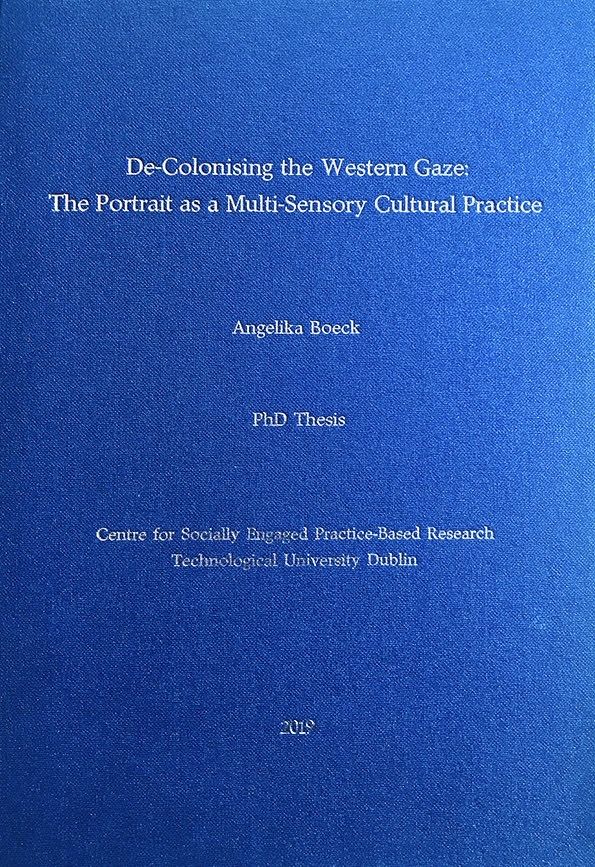

My PhD thesis in the field of fine arts is a critical analysis of three (out of nine) practice-based projects resulting from almost a decade of research, constituting a genuinely new body of work entitled . Based on the avant-garde search for ‘primitive’ origin and the tradition of comparative anthropology, it builds on the awareness of a contrast between the historical Western conception and representation of the Other as inferior. It further addresses the problem that Western research largely neglected that the Other also have a tradition to make sense of their others – often relying on senses other than vision. My research projects explored sensory modes of relating and addressing and their related form of expressing otherness which I saw as an opportunity to expand the conception of the portrait through applying an innovative methodology based on othering. It allows for a combination of portrait and self-portrait and mutual representation, or ‘’. For the three projects central to my thesis, I first directly experienced human modes of perception and representation at the following instantations: footprints (, 2005); expressions related to sound and rhythm (, 2005); and head/body shape (, 2007). Secondly, through the emphasis on the look in my own depictions of participants, I provoked a dialectic between the Western gaze and non-Western methods, creating a tension between their similarities and differences. By asking participants to indirectly represent the Western gaze, I simultaneously drew attention to historical anthropological surveys – a juxtaposition brought forth through my own vulnerable research position. However, in my artworks, curatorial projects and written publications, by combining both perspectives, I shifted emphasis from a co-creative to a more personal and intersubjective approach, creating new meaning through interpretation. In this thesis I set out to explore how and in what ways the experimental, methodological frames adopted in challenge, reinforce or both, dominant Western regimes of representing the ‘other’. My analysis shows that I was (and continue to be) not only subverting, but also returning the Western gaze which I claim is its strongest element. Having placed myself in the frame (and with it the Western gaze) is the significant component which enables a productive critical discourse around the entanglements of ‘self’ and ‘other’. I maintain this to be an original contribution to the field. I further found my previously expressed idea affirmed that my research highlights a rich potential of representational means which exists in non-Western cultural practices. My approach juxtaposes non-western and indigenous sensorially organised representational systems with a Western vision-based perspective. This confirms the hypothesis from which my art projects began, namely the observation of the extent to which we are embedded in the representations of others, as also argued by Oscar Wilde in his novel 'The Picture of Dorian Gray': ‘Every portrait that is painted with feeling is a portrait of the artist, not of the sitter. The sitter is merely the accident, the occasion’ (Wilde, 1890: 5).
